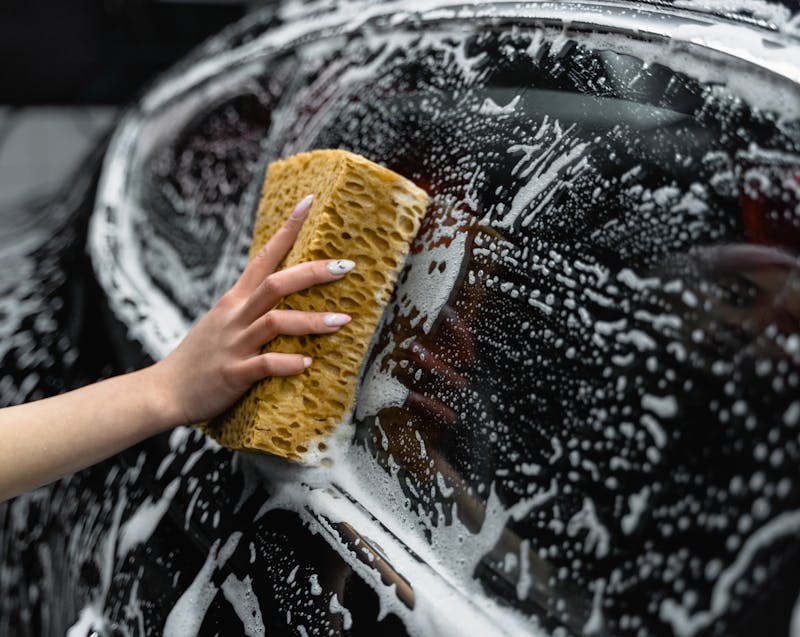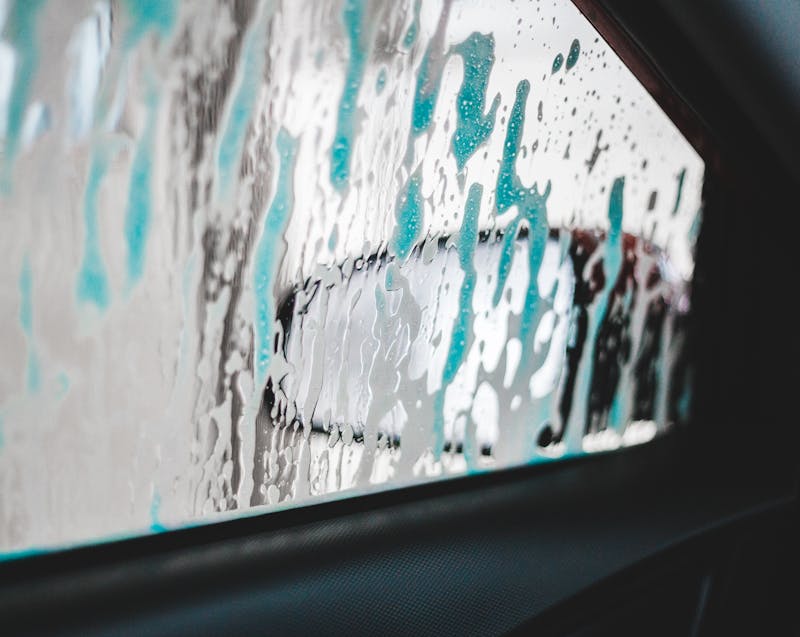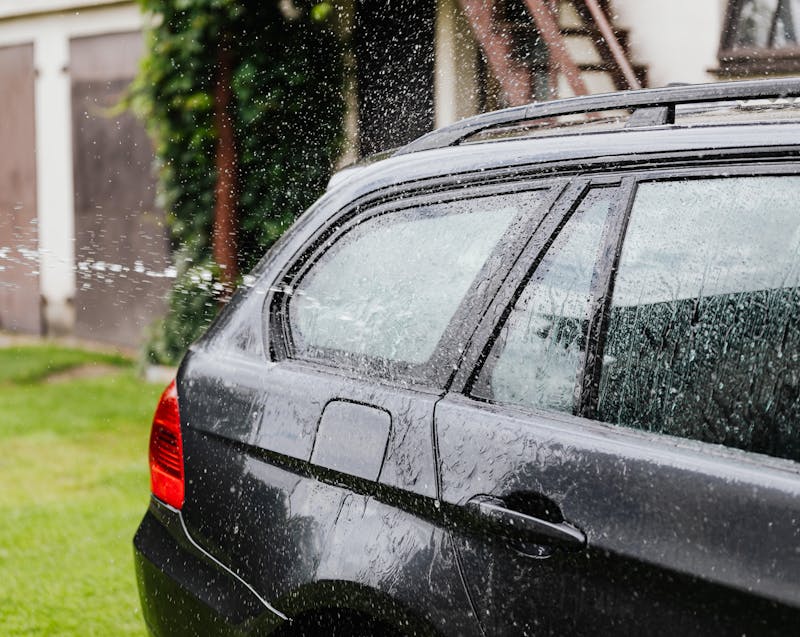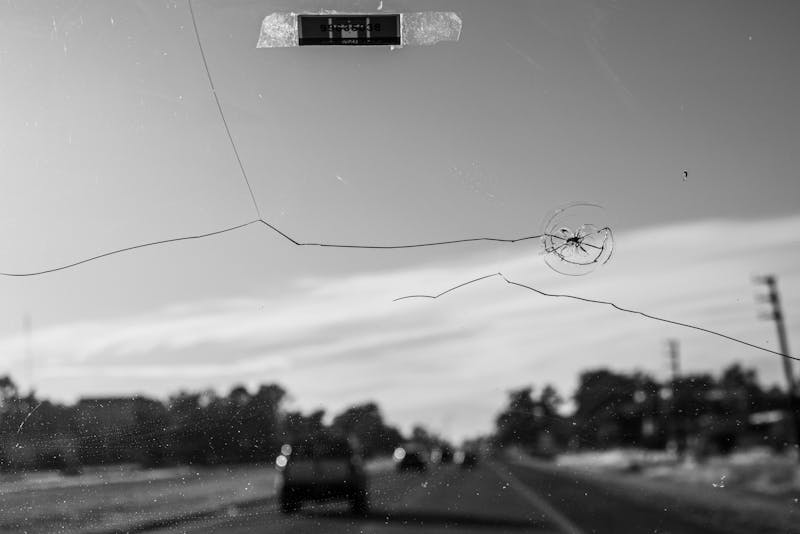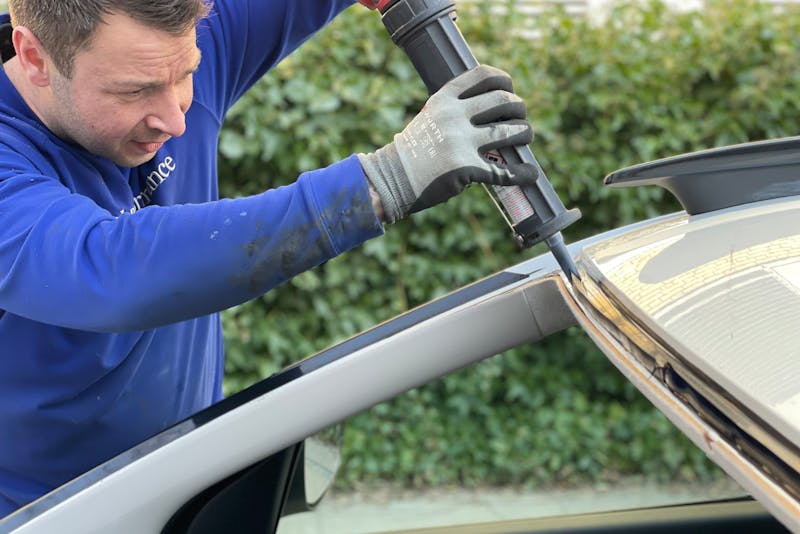
- You can achieve streak-free, professional-quality auto glass cleaning using simple household ingredients like vinegar, baking soda, rubbing alcohol, and lemon juice.
- Microfiber cloths and distilled water are essential tools for preventing scratches and water spots.
- Avoid cleaning glass under direct sunlight and never use ammonia-based cleaners on tinted windows.
- Regular cleaning—every two weeks for exteriors and monthly for interiors—maintains visibility and prevents grime buildup.
- Eco-friendly homemade cleaners are safe, cost-effective, and reduce environmental impact compared to store-bought products.
- Use specialized methods for tough issues like bug splatters, water spots, or greasy film to keep your glass spotless.
- While DIY cleaning works well, cracks, chips, or deep scratches should always be handled by professional auto glass technicians.
Keeping your car’s glass spotless isn’t just about aesthetics—it’s about safety, clarity, and comfort. A clean windshield, side mirrors, and rear window enhance visibility, prevent glare, and make driving more enjoyable. While professional glass cleaners and detailing services can yield excellent results, they also come with a price tag. The good news? You don’t need to spend a fortune to get crystal-clear windows. With the right household ingredients, you can clean your auto glass effectively and affordably.
In this comprehensive guide, we’ll explore proven, budget-friendly ways to clean your auto glass using common household items. We’ll cover what works, what to avoid, and how to achieve streak-free results that rival professional detailing.
Why Keeping Auto Glass Clean Matters
Clean auto glass is more than a cosmetic choice—it’s a key factor in safe and comfortable driving. Over time, dirt, pollen, road salt, bird droppings, and greasy residues accumulate on your car’s glass surfaces. If left unchecked, these contaminants reduce visibility, cause glare from headlights, and even wear down wiper blades faster.
Additionally, film buildup from interior off-gassing (caused by plastics and upholstery) can create a hazy layer on the inside of your windshield. This haze can distort light at night and lead to eye strain. Regular cleaning not only preserves the appearance of your car but also ensures optimal visibility and safety.
In short, clean glass equals clear vision—and that’s priceless when you’re on the road.
What You’ll Need Before You Start
Before diving into cleaning methods, it’s important to gather the right tools and materials. Fortunately, most of what you need is already in your home. Using the correct tools ensures you won’t scratch or damage the glass while cleaning.
Here’s what you’ll need:
- Microfiber cloths: These are essential for streak-free results and won’t leave lint behind.
- Spray bottles: Perfect for mixing and applying homemade cleaning solutions.
- Distilled water: Tap water can contain minerals that leave spots.
- Newspapers (optional): Old-fashioned but effective for polishing glass.
- Soft-bristle brush or toothbrush: Useful for scrubbing corners and crevices.
- A clean, shaded workspace: Avoid cleaning glass in direct sunlight to prevent streaks caused by quick evaporation.
With these tools ready, you can move on to making effective glass cleaners from items already in your pantry or laundry room.
The Science Behind Homemade Auto Glass Cleaners
Before we jump into recipes, it helps to understand why these household ingredients work so well. Commercial cleaners often use alcohol, ammonia, or surfactants (cleaning agents that break down grease and dirt). Fortunately, several household alternatives can achieve the same effect—without harsh chemicals or high costs.
- Vinegar is an acidic substance that dissolves mineral deposits, grease, and dirt effectively.
- Baking soda acts as a mild abrasive that removes stubborn grime and bugs.
- Rubbing alcohol helps the solution dry quickly, minimizing streaks.
- Dish soap cuts through oily residues and bug splatters with ease.
- Lemon juice provides natural acidity for cutting through dirt while leaving a pleasant scent.
By understanding how these ingredients interact, you can customize your cleaning solution for specific needs—whether you’re tackling hard water spots or removing stubborn streaks.
DIY Auto Glass Cleaner Recipes That Actually Work
Every car owner faces different cleaning challenges. Some struggle with interior film, while others deal with bug splatters and rain spots. Below are several tested recipes that work wonders for various conditions—all made from everyday household ingredients.
1. Classic Vinegar and Water Solution
This is one of the most popular and effective homemade glass cleaners.
Ingredients:
- 1 cup distilled white vinegar
- 1 cup distilled water
- Optional: 1 tablespoon rubbing alcohol (for quicker drying)
Instructions:
- Mix ingredients in a spray bottle.
- Shake gently before each use.
- Spray generously on the glass and wipe using a microfiber cloth in circular motions.
- Finish with vertical strokes for a streak-free finish.
Why it works: The vinegar’s acidity cuts through dirt, grime, and film buildup, leaving your glass sparkling.
2. Baking Soda Paste for Stubborn Spots
For dried-on bugs, tree sap, or mineral deposits, this paste provides gentle yet effective abrasion.
Ingredients:
- 2 tablespoons baking soda
- 1 tablespoon water
Instructions:
- Mix into a paste and apply to the affected area.
- Rub gently with a soft cloth or sponge.
- Rinse thoroughly and dry with a clean towel.
Why it works: Baking soda’s mild grit removes tough grime without scratching the glass.
3. Lemon Juice Shine Booster
Perfect for interior windows or when you want your car to smell fresh after cleaning.
Ingredients:
- 2 tablespoons lemon juice
- 1 cup distilled water
- ½ teaspoon dish soap
Instructions:
- Mix ingredients in a spray bottle.
- Shake well and spray on glass surfaces.
- Wipe clean using circular motions with a microfiber cloth.
Why it works: The citric acid in lemon juice breaks down grease and leaves a streak-free, glossy finish.
4. Rubbing Alcohol and Vinegar Combo
This formula is excellent for quick-drying and streak-free results—especially for exterior glass.
Ingredients:
- 1 cup rubbing alcohol
- 1 cup distilled water
- 1 tablespoon white vinegar
Instructions:
- Combine ingredients in a spray bottle.
- Apply to the windshield and wipe clean immediately.
Why it works: The alcohol evaporates quickly, reducing streaks and helping dissolve oily residues.
5. Ammonia-Free Interior Glass Cleaner
Ammonia can damage tinted windows and certain plastics, so this recipe is a safer option for interiors.
Ingredients:
- 1 cup distilled water
- 1 cup rubbing alcohol
- 1 tablespoon cornstarch
Instructions:
- Mix the solution thoroughly and shake before each use.
- Spray on the inside of windows and wipe clean.
Why it works: The cornstarch acts as a gentle polishing agent, leaving your glass smooth and clear.
Step-by-Step Guide: How to Clean Auto Glass Like a Pro
Even the best cleaner can’t do its job without proper technique. Here’s a step-by-step guide to ensure streak-free results every time.
- Start with the exterior. Spray your homemade cleaner liberally over the windshield and windows.
- Wipe with a microfiber cloth. Use circular motions to loosen dirt and grime.
- Switch to vertical and horizontal strokes. This helps identify any streaks left behind.
- Clean wiper blades separately. Dirty wipers can re-contaminate freshly cleaned glass.
- Move to the interior. Use less spray to prevent dripping onto the dashboard.
- Polish with a dry cloth or newspaper. For a final shine, buff gently in circular motions.
Pro Tip: Clean one window at a time and work in shaded areas to prevent quick drying that causes streaks.
Common Mistakes to Avoid When Cleaning Auto Glass
Even the most experienced car owners can make small errors that lead to streaks or scratches. Here are common pitfalls and how to avoid them:
- Avoid using paper towels: They can leave lint and micro-scratches on glass.
- Never clean under direct sunlight: Heat causes the cleaner to evaporate too quickly, leaving streaks.
- Skip household ammonia on tinted glass: It can damage the tint film.
- Don’t forget the wiper blades: Dirty blades can cause streaks even after cleaning.
- Avoid abrasive pads: Always use soft, non-scratching materials like microfiber or sponge.
By steering clear of these mistakes, your homemade cleaning routine will yield professional-quality results.
How Often Should You Clean Your Car Windows?
There’s no one-size-fits-all answer—it depends on your environment and driving habits. If you frequently drive through dusty roads, urban pollution, or areas with tree sap, you’ll need to clean more often.
As a general rule:
- Exterior windows: Once every two weeks
- Interior windows: Once a month
- Wiper blades: Wipe weekly with a damp cloth
Regular maintenance not only keeps your car looking pristine but also prevents grime buildup that becomes harder to remove over time.
How to Handle Specific Auto Glass Issues
Sometimes, certain problems require targeted solutions. Here’s how to address them effectively:
1. Water Spots
Use a vinegar and water mix (1:1 ratio). Spray on, let it sit for 2 minutes, then wipe clean.
2. Greasy Film Inside the Windshield
Combine rubbing alcohol and vinegar for a powerful interior cleaner. Wipe twice—first with a damp cloth, then a dry one.
3. Bug Residue
Apply baking soda paste or a dab of dish soap and let it sit for a minute before scrubbing.
4. Tree Sap
Rub with a bit of rubbing alcohol or white vinegar, then rinse and dry immediately.
5. Foggy Windows
Wipe the inside with a small amount of shaving cream (it acts as an anti-fog barrier).
Eco-Friendly Benefits of Homemade Glass Cleaners
Making your own auto glass cleaners isn’t just cost-effective—it’s environmentally responsible. Commercial glass cleaners often contain harsh chemicals that contribute to indoor air pollution and wastewater contamination. In contrast, homemade solutions use biodegradable ingredients that are safer for you, your family, and the planet.
Plus, you reduce plastic waste by reusing spray bottles instead of buying new containers. This simple shift can make a significant difference over time.
Environmental benefits include:
- Reduced chemical runoff
- Lower carbon footprint
- Less packaging waste
- Safer air quality inside your car
In short, by cleaning your car’s glass naturally, you’re doing both your wallet and the environment a favor.
When to Use Professional Auto Glass Services
Homemade solutions work wonders for cleaning, but they can’t fix everything. If your windshield or windows have deep scratches, chips, or cracks, it’s time to call a professional. Minor damage can worsen with temperature changes and vibrations from driving.
You should seek professional help if:
- You notice spiderweb-like cracks.
- There’s a chip larger than a quarter.
- The crack is within your line of sight.
- The glass fogs between layers (a sign of seal failure).
Professional auto glass technicians can repair or replace damaged glass before it compromises safety or leads to costly replacements.
Long-Term Maintenance Tips for Clear Auto Glass
Keeping your car windows spotless doesn’t end after cleaning. Consistent maintenance helps maintain visibility and protect your investment.
Follow these long-term tips:
- Apply a rain-repellent treatment monthly to minimize water spots.
- Clean wiper blades regularly to prevent streaking.
- Avoid parking under trees to reduce sap and bird droppings.
- Use a microfiber towel to quickly remove dust or fingerprints as needed.
- Store a small spray bottle of your homemade cleaner in the trunk for on-the-go touch-ups.
Small habits like these extend the life of your glass and keep your car looking polished year-round.
Conclusion: Clear Glass, Clear View—All from Home
Learning how to clean auto glass using household items isn’t just a budget hack—it’s an empowering skill for every car owner. With simple ingredients like vinegar, baking soda, and rubbing alcohol, you can achieve professional-grade clarity without spending extra money or exposing yourself to harsh chemicals.
By following the techniques, avoiding common mistakes, and maintaining your glass regularly, you’ll enjoy safer drives, better visibility, and a spotless vehicle that reflects your attention to detail. Clean auto glass not only looks good—it keeps you safe and enhances your entire driving experience.
